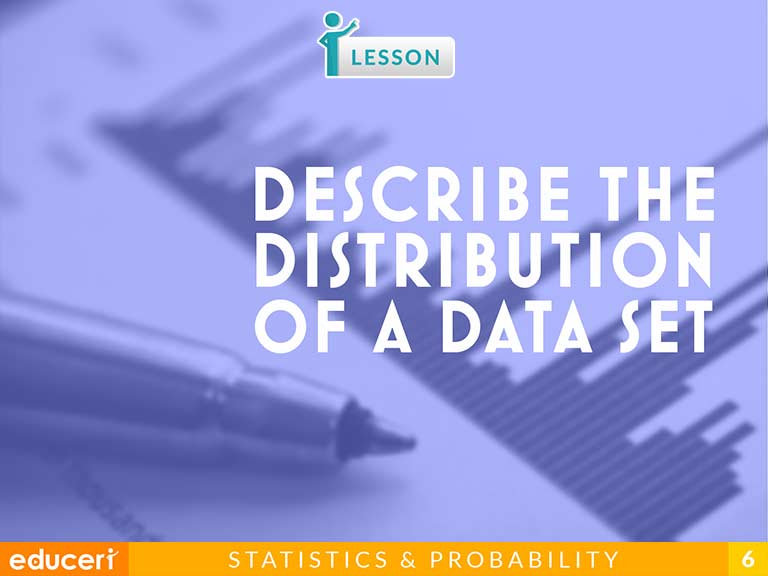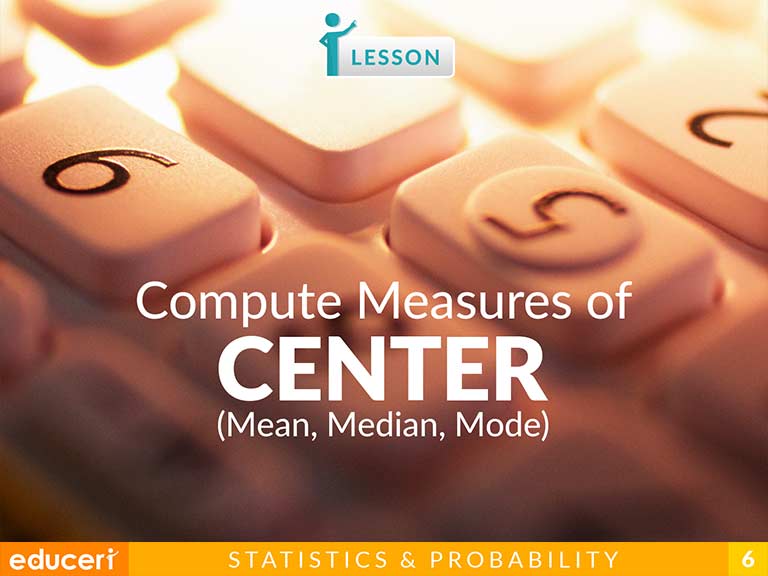All Lessons

Write an Inequality
(Y10) Solve linear inequalities and graph their solutions on a number line (ACMNA236)
6.NS.7.B Write, interpret, and explain statements of order for rational numbers in real-world contexts. For example, write -3 oC > -7 oC to express the fact that -3 oC is warmer than -7 oC.
6.EE.86.EE.8 Write an inequality of the form x > c or x < c to represent a constraint or condition in a real-world or mathematical problem. Recognize that inequalities of the form x > c or x < c have infinitely many solutions; represent solutions of such inequalities on number line diagrams.
Share This Lesson

Solve One-Step Equations (Multiplication & Division)
6.EE.5 Understand solving an equation or inequality as a process of answering a question: which values from a specified set, if any, make the equation or inequality true? Use substitution to determine whether a given number in a specified set makes an equation or inequality true.
6.EE.66.EE.6 Use variables to represent numbers and write expressions when solving a real-world or mathematical problem; understand that a variable can represent an unknown number, or, depending on the purpose at hand, any number in a specified set.
6.EE.76.EE.7 Solve real-world and mathematical problems by writing and solving equations of the form x + p = q and px = q for cases in which p, q and x are all nonnegative rational numbers.
Share This Lesson

Solve Inequalities (Additive Inverse)
Share This Lesson

Combine Like Terms
6.EE.3 Apply the properties of operations to generate equivalent expressions. For example, apply the distributive property to the expression 3 (2 + x) to produce the equivalent expression 6 + 3x; apply the distributive property to the expression 24x + 18y to produce the equivalent expression 6 (4x + 3y); apply properties of operations to y + y + y to produce the equivalent expression 3y.
6.EE.46.EE.4 Identify when two expressions are equivalent (i.e., when the two expressions name the same number regardless of which value is substituted into them). For example, the expressions y + y + y and 3y are equivalent because they name the same number regardless of which number y stands for.
Share This Lesson

Compute the Surface Area of Prisms
This math lesson teaches students how to calculate the surface area of a prism. The lesson includes research-based strategies and strategic questions that prepare students for standardized assessments. In this lesson, students will identify the bases and sides of a prism, calculate their separate areas and sum the separate areas to find the surface area. In addition to the lesson, there are two pages of independent practice and three pages of periodic review with questions modeled after standardized assessments.
Share This Lesson

Calculate the Area of a Rhombus
(C) Write equations that represent problems related to the area of rectangles, parallelograms, trapezoids, and triangles and volume of right rectangular prisms where dimensions are positive rational numbers
6.8.D(D) Determine solutions for problems involving the area of rectangles, parallelograms, trapezoids, and triangles and volume of right rectangular prisms where dimensions are positive rational numbers.
This math lesson teaches students how to calculate the area of a rhombus. The lesson includes research-based strategies and strategic questions that prepare students for standardized assessments. In this lesson, students will identify a rhombus and use one of two methods (the product of base and height or one-half the product of the diagonals) to calculate its area. In addition to the lesson, there are two pages of independent practice and three pages of periodic review with questions modeled after standardized assessments.
Share This Lesson

Identify Statistical Questions
(A) Formulate a meaningful question, determine the data needed to answer the question, gather the appropriate data, analyze the data, and draw reasonable conclusions
QR.4.L(L) Determine the need for and purpose of a statistical investigation and what type of statistical analysis can be used to answer a specific question or set of questions
STAT.2.E(E) Formulate a meaningful question, determine the data needed to answer the question, gather the appropriate data, analyze the data, and draw reasonable conclusions
This statistics and probability lesson teaches students how to recognize statistical questions. The lesson includes research-based strategies and strategic questions that prepare students for assessments. In this lesson, students will learn to recognize statistical questions. The focus of this lesson is to familiarize students with statistical questions and how to investigate them.
Share This Lesson

Describe the Distribution of a Data Set
This statistics and probability lesson teaches students how to describe the distribution of a data set. The lesson includes research-based strategies and strategic questions that prepare students for assessments. In this lesson, students will describe the distribution of data sets. This lesson focuses on describing a variety of statistical distributions in different situations. Students are asked to describe different related data sets and describe what that means.
Share This Lesson

Compute Measures of Center (Mean, Median, Mode)
This statistics, data analysis, and probability lesson focuses on computing the mean, median, and mode of data sets. The lesson includes research-based strategies and strategic questions that prepare students for assessments. In this lesson, students order the numbers from least to greatest. Then, they compute the mean by adding all the values in the data set and dividing by the number of items. They compute the median by identifying the middle number, realizing that if there is an even number, they will need to find the sum of the two middle values and divide by two. They compute the mode by identifying the most frequent number in the data set. In addition to the lesson, there are eight pages of Independent Practice and Periodic Reviews with questions modeled after current adaptive testing items.
Share This Lesson

Compute the Variability of Data Sets
This statistics, data analysis, and probability lesson focuses on computing the median, upper quartile, and lower quartile of a data set. The lesson includes research-based strategies and strategic questions that prepare students for assessments. In this lesson, students read the problem, identifying the data set and what it represents as well as ordering the numbers from least to greatest. Then, they identify the median and calculate the lower quartile and the upper quartile. Finally, they interpret the answer within the context of the problem. In addition to the lesson, there are four pages of Independent Practice and review with questions modeled after current adaptive testing items.
Share This Lesson

Middle School Next Generation Science Standards Learning Objectives & Essential Tools
Standards are often confused with being Learning Objectives. Standards are the content and skills students need to know by the end of a school year. Learning Objectives are the content and skills students need to know by the end of a lesson. Our Next Generation Science Standards Learning Objectives & Essential Tools guides display teachable Learning Objectives alongside the standards for easy reference. Here on Educeri, the guide also links to relevant lessons right here on the site, making finding a lesson easy. As we add more lessons, we will be updating this guide, so check back regularly.
Share This Lesson

Grades 6-8 Common Core State Standards Learning Objectives - Literacy in History/Social Studies, Science, and Technical Subjects
Common Core Standards are often confused with being Learning Objectives. Core Standards are the content and skills students need to know by the end of a school year. Learning Objectives are the content and skills students need to know by the end of a lesson. Our Common Core Learning Objectives & Essential Tools guides display teachable Learning Objectives alongside the standards for easy reference.







